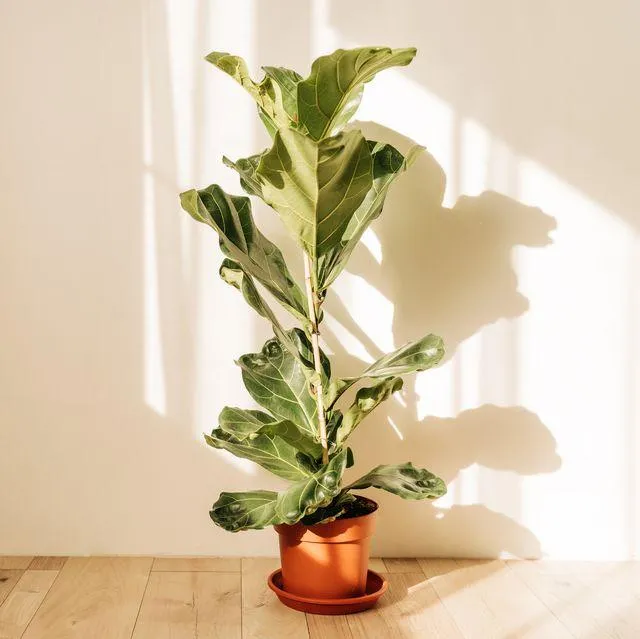
Indoor Plants Expert: The Best Large Plants for Your Home
Your Guide to Choosing and Caring for Large Indoor Plants
If you’re reading this, you’re likely looking to bring some greenery indoors but aren’t sure which large live plants would work best in your home. From my experience helping many customers select houseplants over the years, I’ve learned that choosing the right plants and maintaining them properly is key to keeping them healthy. In this article, I’ll cover the top options for big indoor plants, things to consider when selecting one, and tips for providing proper care so your plants thrive.
Best Large Indoor Plant Options
- Dieffenbachia (Dumb Cane) – With its lovely large leaves ranging from light to dark green with bright white veins, Dieffenbachia is a striking plant that adds tons of visual appeal. It thrives in medium to low light. Just be wary of its sap, which can irritate skin.
- Dracaena Fragrans (Corn Plant) – With long, thin leaves in shades of green, yellow, or red at the tips, Dracaena is an elegant plant perfect for large spaces. It tolerates low light well. Stand back, though – some people find its sap toxic if ingested.
- Ficus Alii (Minnie Bruce Pratt Jade Plant) – Featuring thick, shiny leaves that are dark green with lighter variegation, the Ficus Alii is a real showstopper. It likes bright, indirect light. Prune to shape. Watch its care – ignore watering too long, and these drier-climate adapted plants will sulk.
Factors to Consider When Choosing
When selecting a large indoor plant, consider these key factors:
- Light Conditions – Different plant species have varying light needs, from low to very bright. Match plants to the lighting in your home.
- Size – Large plants require sizable pots (10″+) and grow to fill significant space. Know dimensions to prevent overcrowding.
- Humidity Levels – Some plants like high humidity; others adapt to typical indoor conditions. Monitor and use humidifiers as needed.
- Toxicity – Check if any parts are poisonous to pets or kids. Display out of reach if so.
Tips for Proper Care
Here are some tried-and-true techniques for caring for your large indoor plant:

- Watering – Check soil moisture regularly by sticking your finger 1-2″ deep. Water thoroughly when dry, allowing excess to drain. Adjust based on plant type and growing conditions.
- Fertilizing – Use a balanced, water-soluble plant food every 2-4 weeks during active growth periods. Follow label instructions precisely.
- Repotting – Check roots periodically and transfer to a slightly larger pot as needed, usually every 1-3 years. Use a well-draining potting mix suited for indoor plants.
- Pruning – Trim off any dried or diseased parts. Shape plants that benefit from it, such as Ficus Alii. Sanitize pruners between cuts.
- Pest and Disease Management – Monitor closely for common houseplant issues like pests or leaf spot. Treat promptly if caught early. Prevent by isolating new acquisitions.
Common Problems and Their Solutions
No matter how meticulously you care for plants, issues can still crop up. Here are some potential problems and remedies:
- Leaf Drop – Too much or too little water are common culprits. Check soil moisture and drainage. Cut back on fertilizer if leaves appear burnt.
- Yellowing Leaves – Indicative of over or under-watering, nutritional deficiency, or non-specific environmental stresses. Improve care and conditions.
- Spider Mites – Tiny pests cause stippling on leaves. Wash plants with a strong jet of water or use insecticidal soap. Monitor new growth closely afterwards.
- Mealybugs – Fluffy white spots secrete sweet liquid plants exude. Isolate and wipe down leaves/stems with alcohol on a cotton ball. Retreat every 5-7 days for several weeks.
With some trial and error, it gets easier to diagnose issues and care for your large indoor plants successfully long-term. It’s worth it to turn your home into a lush urban oasis! Let me know if you have any other questions.
Top Indoor Houseplants for Any Home
| Plant | Light Needs | Water Needs | Size |
|---|---|---|---|
| Spider Plant | Medium | Let soil dry out between waterings | Up to 3 feet tall and wide |
| Snake Plant | Low | Let soil dry out completely | Up to 3 feet tall |
| Dieffenbachia | Medium | Let soil moisten slightly between waterings | Up to 4 feet tall |
| Chinese Evergreen | Medium | Let soil dry slightly between waterings | Up to 5 feet tall |
| English Ivy | Low to Medium | Let soil dry slightly between waterings | Varied, climber |
FAQ
-
Are large indoor plants hard to take care of?
Basically, some large plants are more high maintenance than others. Plants like palm trees need a ton of sunlight and water every day. But peace lilies and spider plants are pretty low-effort—they’ll let you know when they need a drink! At the same time, it’s not that hard to give plants what they want with a little trial and error.

-
Do large plants release a lot of oxygen?
While it’s true that plants produce oxygen, the idea that they can “detoxify” an entire home is kind of an exaggeration. A few big plants are nice to have around, but they aren’t gonna fully oxygenate a huge room or anything. On the other hand, plants do absorb carbon dioxide at night, so lots of greenery should help clean the air a little. It’s certainly better than nothing!
-
What types of large plants do best indoors?
Some good choices for big indoor plants are kind of obvious ones like peace lilies, Chinese evergreens, and spider plants. They can grow really massive over time if you treat them right. Philodendrons, pothos vines, and monstera deliciosa also get pretty huge as houseplants with the proper care. Hmm, I wonder if there’s a world record for biggest indoor plant? I’ll have to look that up!
-
How do you care for large plants that gets lots of sunlight?
Plants that love sunlight, like palm trees, might basically need to live in a sunny window if you want them to thrive indoors. Be sure to water these types regularly, like once a week, when the soil dries out. You can strong them in the sink for a good soak. It also doesn’t hurt to occasionally fertilize in the growing season. Watch out for sunburned leaves on really bright exposed plants—they may need a break from the intense rays sometimes.

-
Are large plants difficult to transport from the store?
Transporting a really big plant can be challenging for sure. Some stores might deliver for a fee. Otherwise, you’ll either need a pickup truck or simply remove the plant from the nursery pot to make it more manageable for car transport. Perhaps load it into a wheelbarrow first before plopping it into your backseat! Just be careful not to break or overly damage any leaves or stems in the process. At the same time, it’s doable with a little planning.
-
How often should large indoor plants be repotted?
As a general rule, most large houseplants will wanna be repotted every couple years once they outgrow their soil space. You may have to upgrade to a much bigger container each time! The roots will literally start emerging from the drainage holes if it’s too small. Signs it’s time are halted growth or wilted leaves. Repotting in fresh soil gives the roots room to spread out and promotes more vegetation. Just be careful not to damage any when you dump it out!
-
Will large houseplants lower indoor air quality?
It’s odd, but some people claim plants give them allergies or asthma issues. At the same time, there isn’t really great evidence that properly cared for houseplants cause indoor air pollution. While plants do transpire a tiny bit of moisture, the air quality benefits of oxygen production and pollutant absorption seem to outweigh any negatives for healthy folks. Those with sensitivities should perhaps test how they react before filling the place with greenery. Overall, plants probably help air quality more than hurt it!
